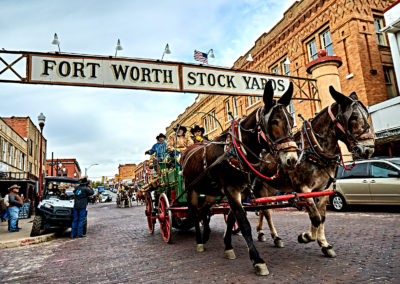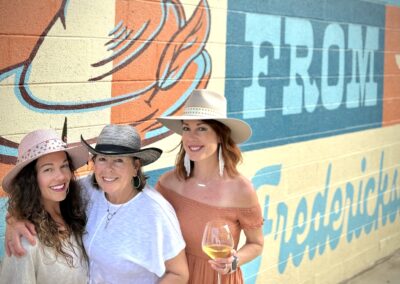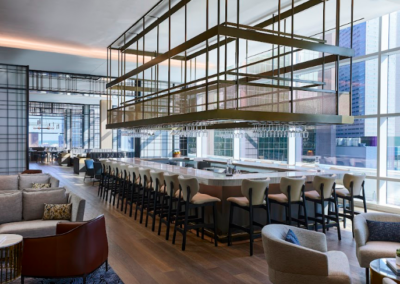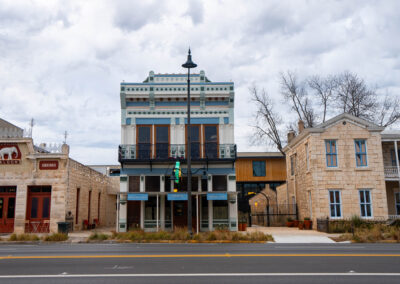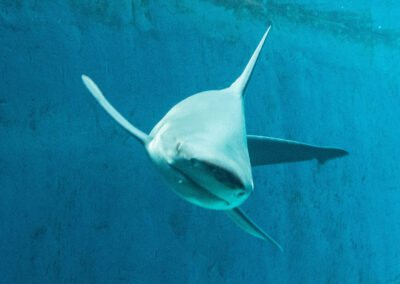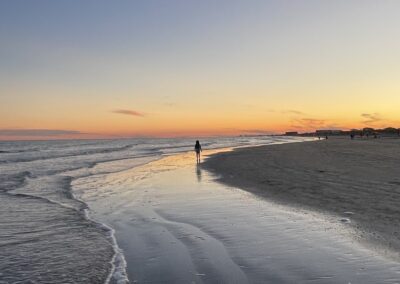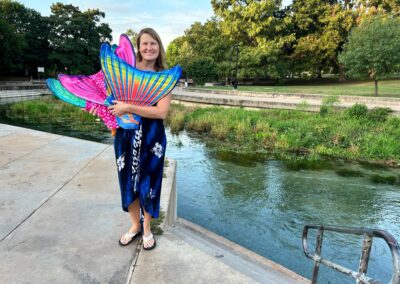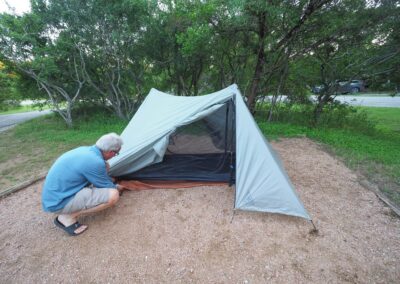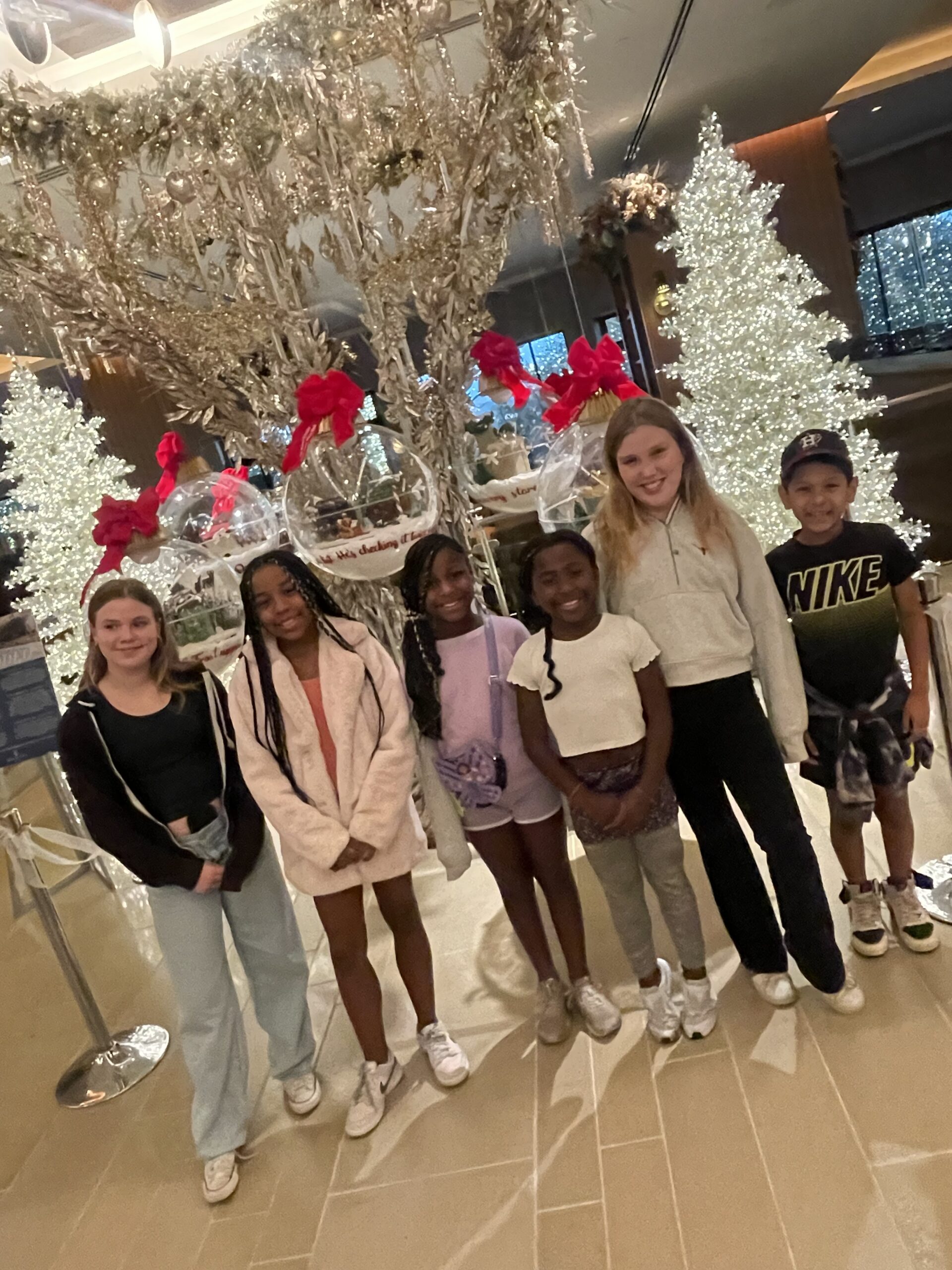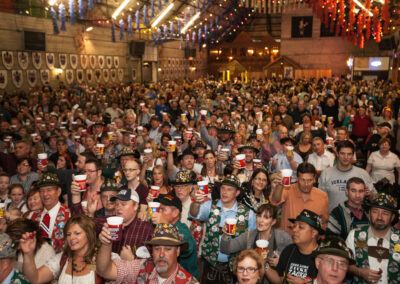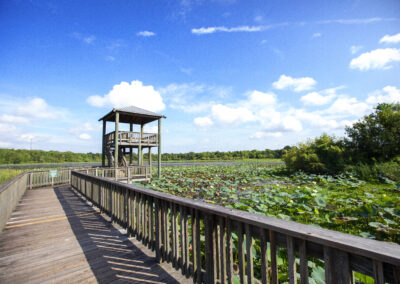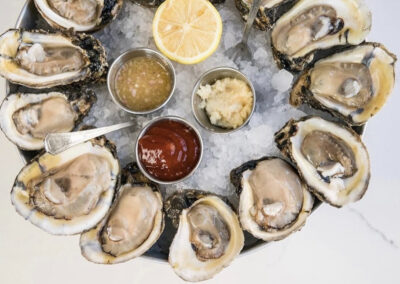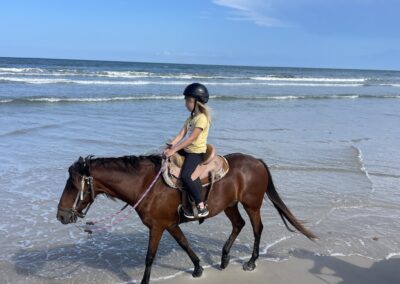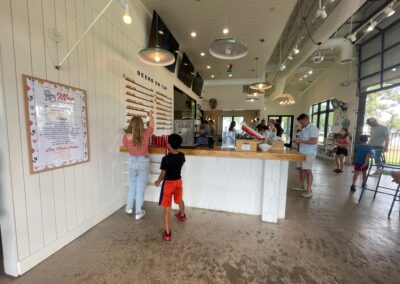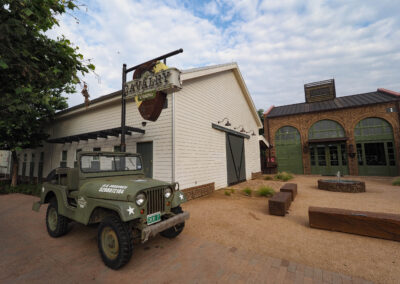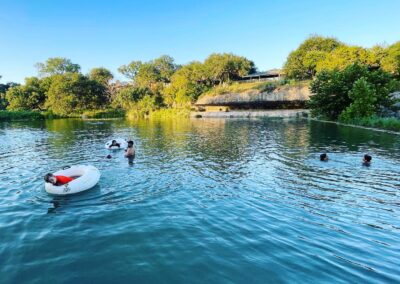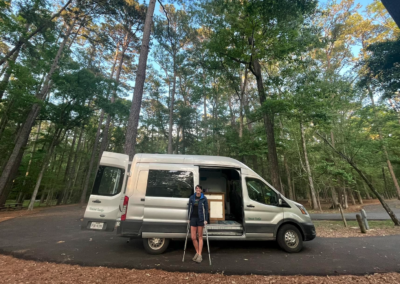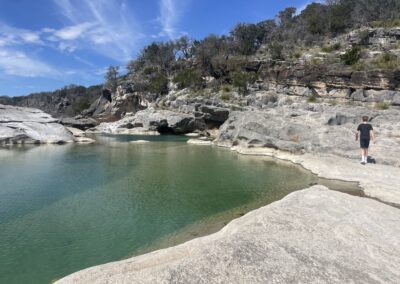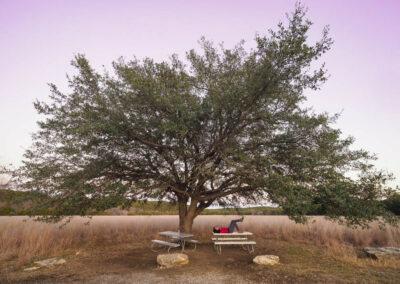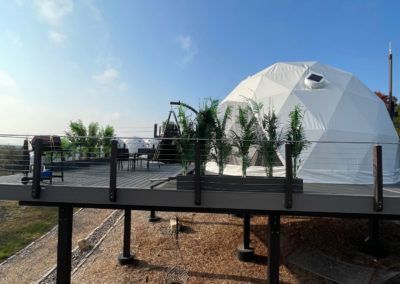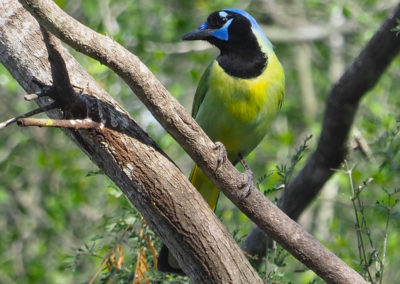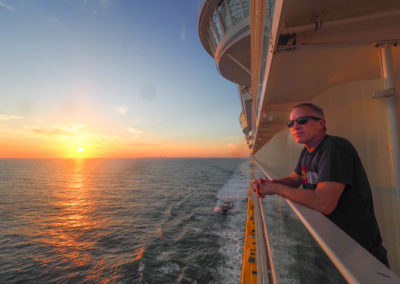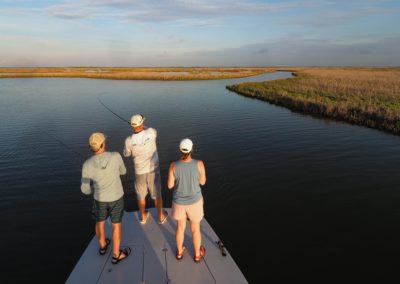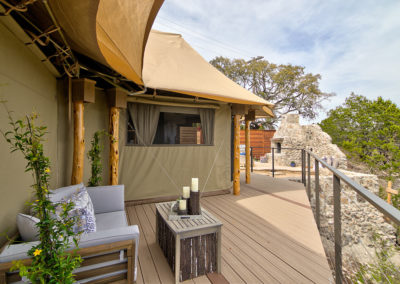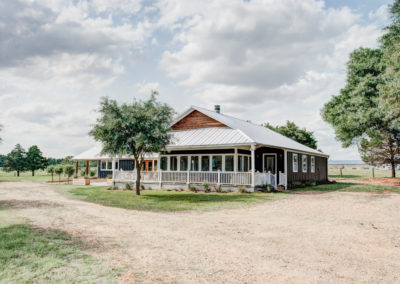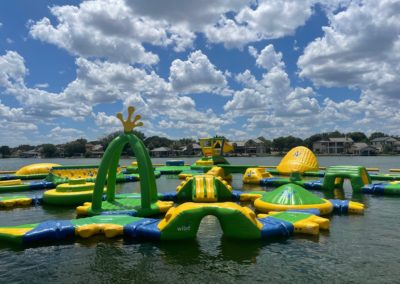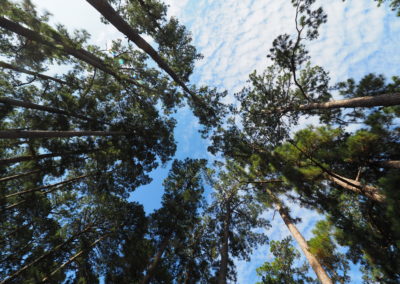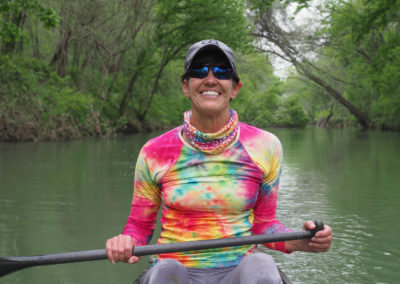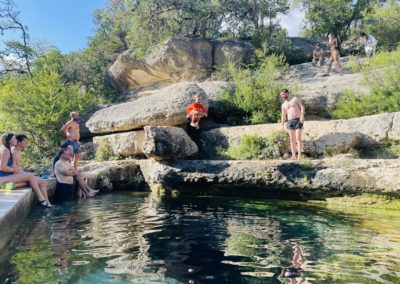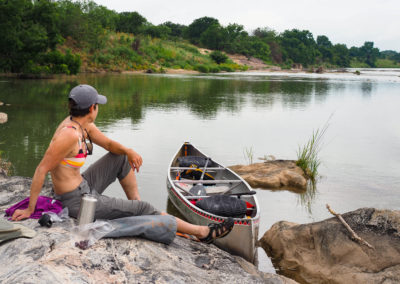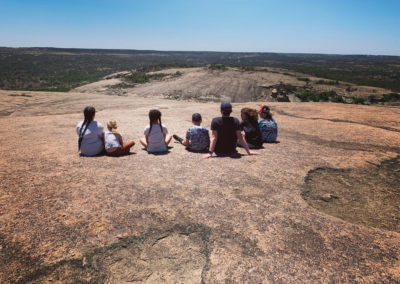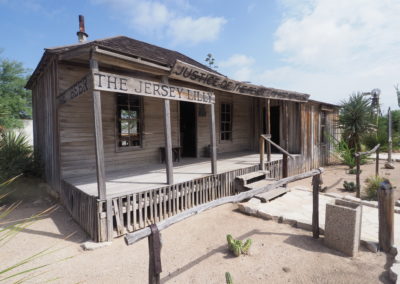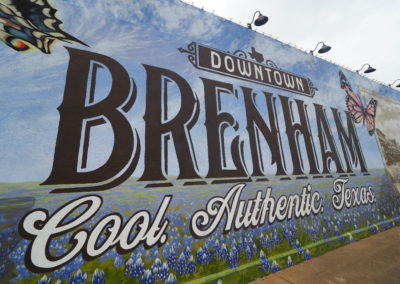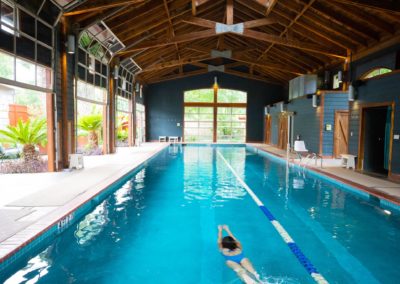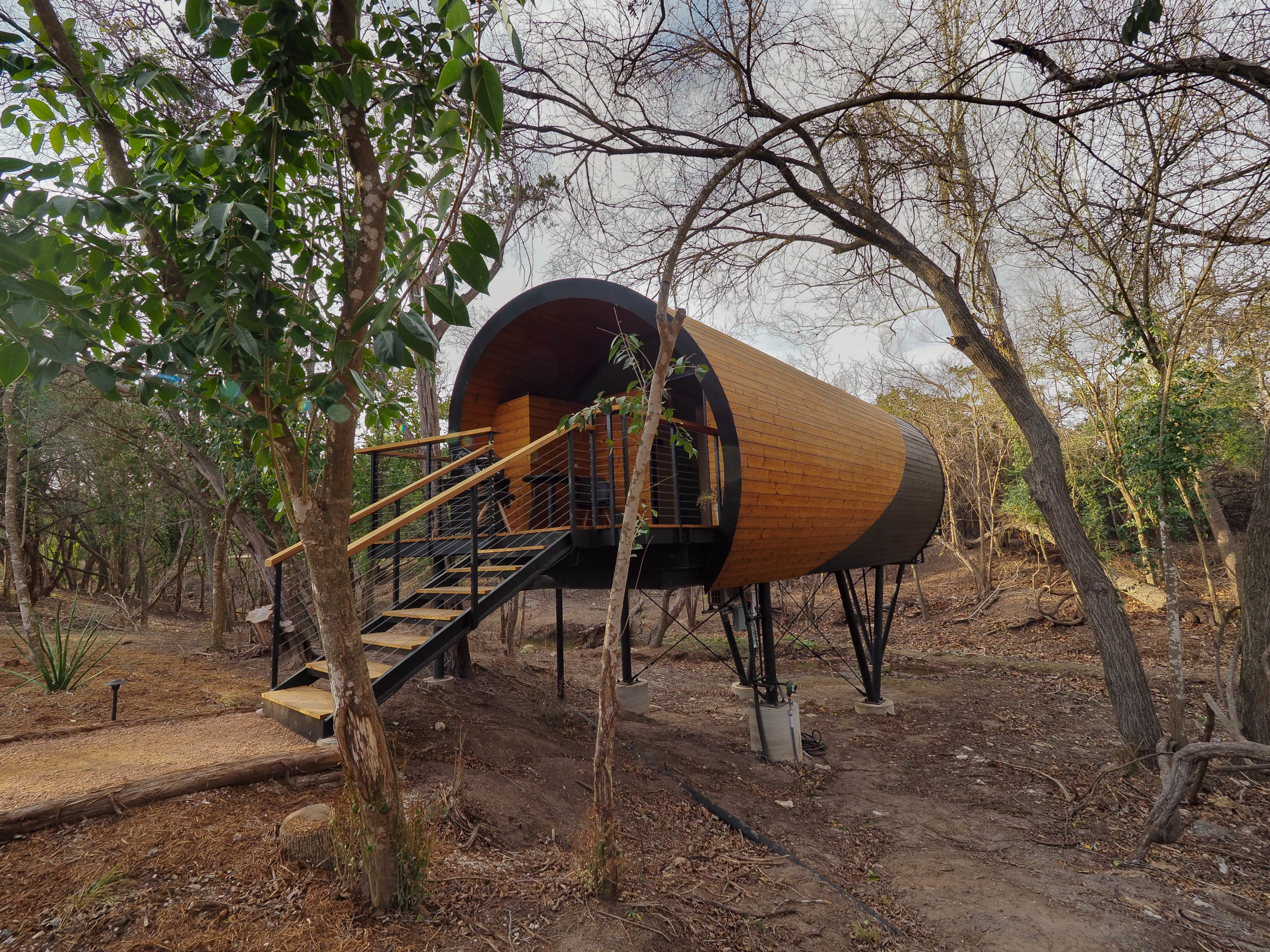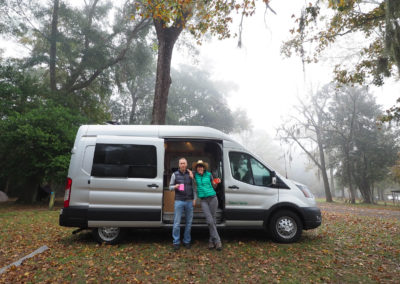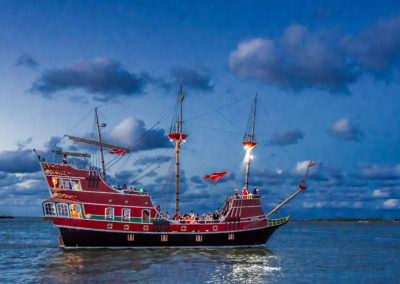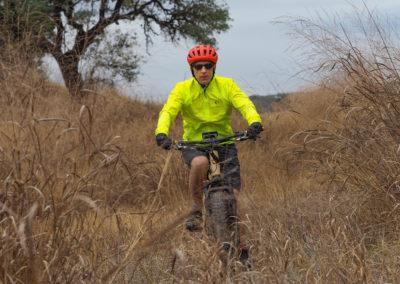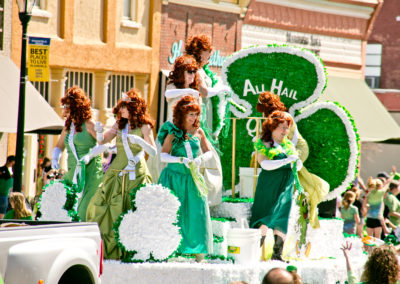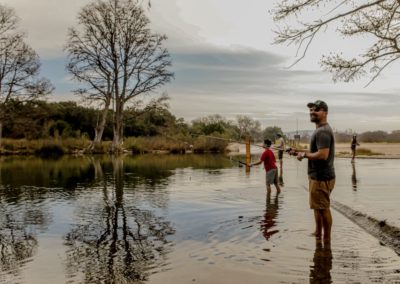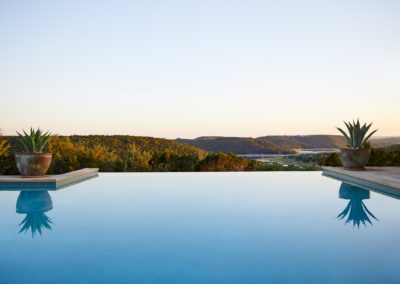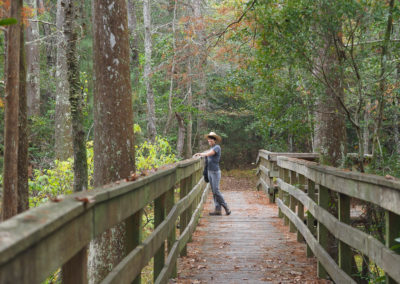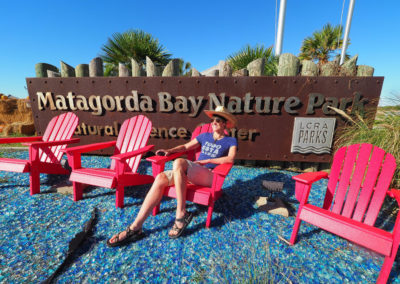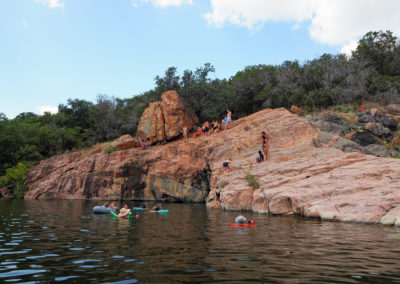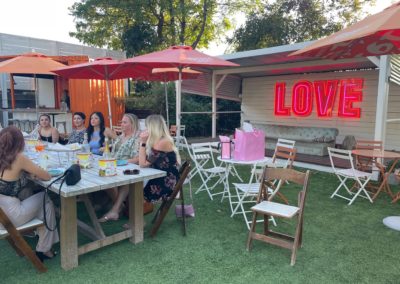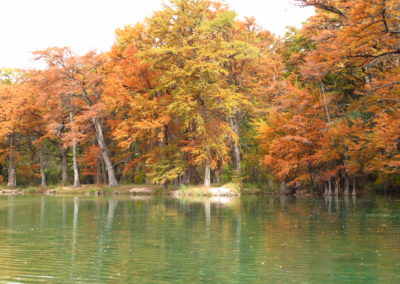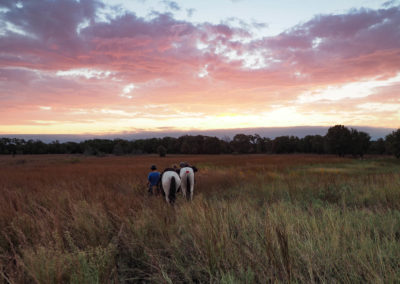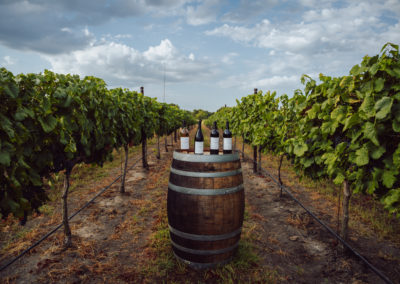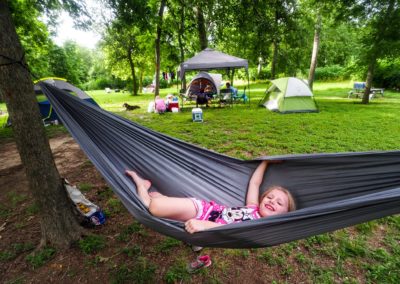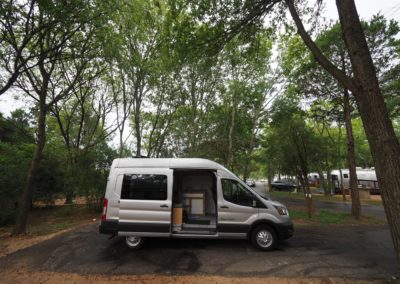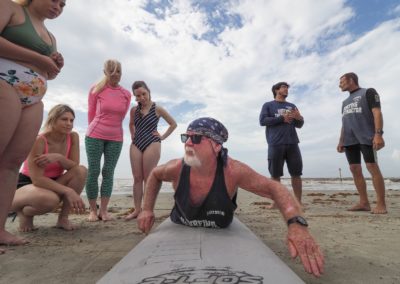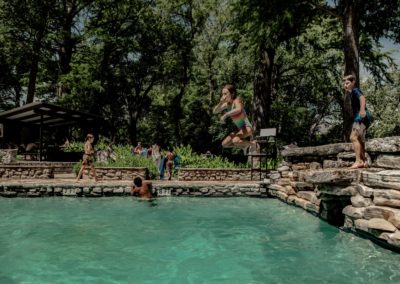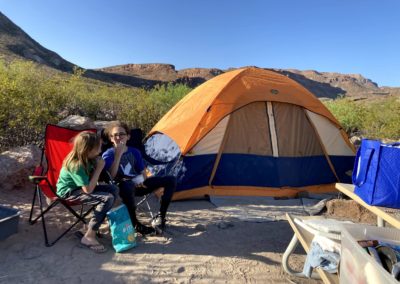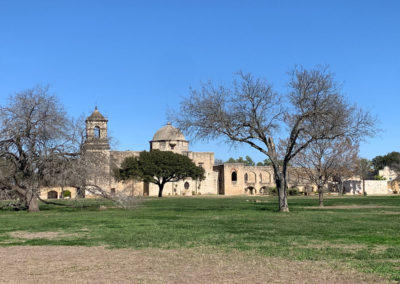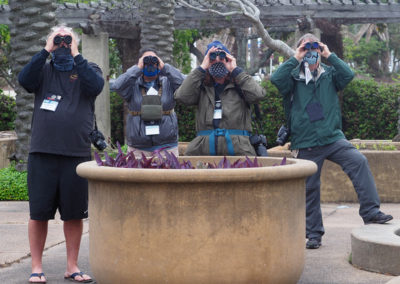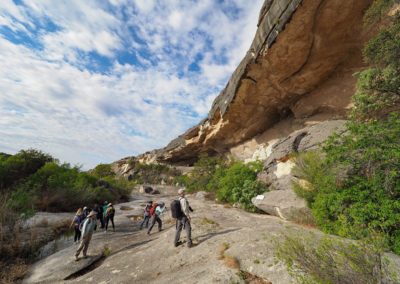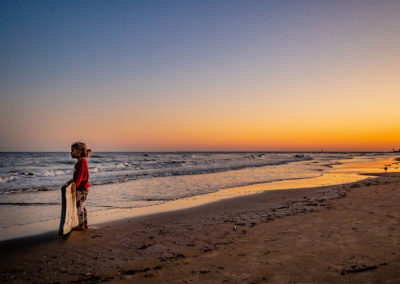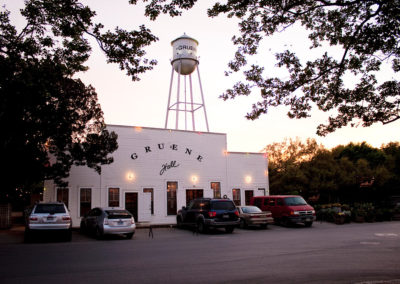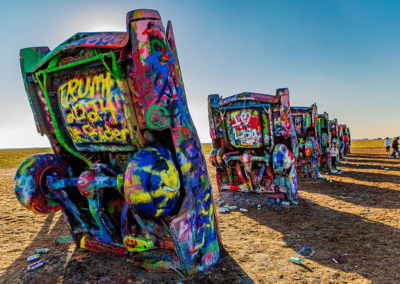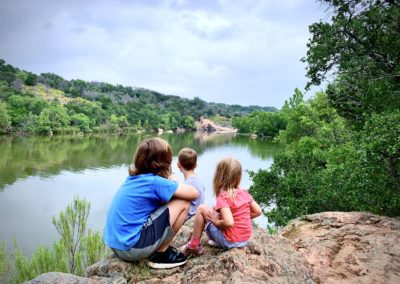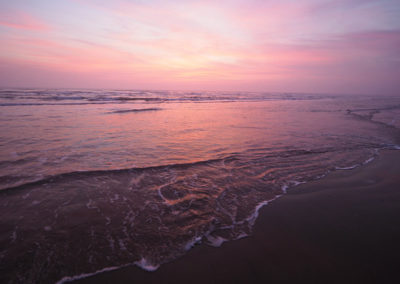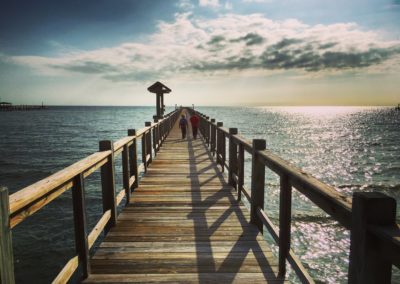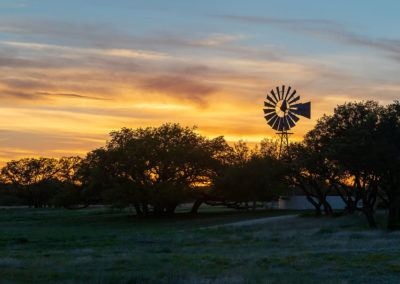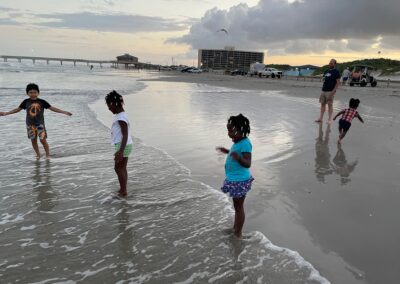
Addie Broyles and her husband Frank don monofins for their mermaid certification lessons in San Marcos. Photo courtesy Addie Broyles
My husband and I fall outside the category of people who dress up for the parade in San Marcos, the self-described “Mermaid Capital of Texas,” but we are certainly the kind of people who have no shame in taking a wild idea to fruition.
After Frank mentioned for the sixth or seventh time that it was his lifelong dream to go to Florida’s Weeki Wachee Springs for an adult mermaid camp, I started researching a trip closer to home where we could make it happen.
That’s how I found Michelle Kraft, who owns the legendary Dive Shop San Marcos, one of the longest-running educational hubs for SCUBA diving in Texas. The shop opened in the 1970s, and Michelle took it over in 2019.
She’s a serious technical diver who has taught and led hundreds of classes and excursions all over the world. And a few years ago, she got into mermaiding, too.
Kraft is one of only a handful of dive instructors in the state who offers mermaid certifications through NAUI, the National Association of Underwater Instructors. (Both NAUI and PADI, the largest SCUBA certification organizations in the world, offer mermaid certifications now.)
So, for Frank’s birthday last year, I gave him mermaid classes, and the last weekend in September, we headed to San Marcos for our two-day class with Kraft.
Getting your mermaid certification

Michelle Kraft teaches mermaid certification classes in San Marcos. Photo courtesy Addie Broyles
Kraft spends most of her time teaching SCUBA classes, but for the mermaid classes, she brings students to the heated pool at the dive shop just outside of town for the first day. On the second day, they meet at the San Marcos River, just downstream from where the “mermaids” used to perform at Aquarena Springs, the headwaters of the San Marcos River.
Both Aquarena and Weeki Wachee started hosting mermaid shows in the late 1940s. Weeki Wachee was first, but Aquarena’s underwater theater was a close second.
Texas State University removed the underwater theater in 2012, after the university bought the former amusement park grounds — where the famed swimming pigs drew crowds for nearly 50 years — and turned it into an educational facility called the Meadows Center. The last performance of Ralph the Swimming Pig was in 1996.
The Meadows Center continues to host glass-bottom boat tours and have recently expanded their public offerings to include stand-up paddleboards and night paddling in clear plastic kayaks. You can also sign up for snorkeling tours but check the calendar and plan ahead. Although the boat tours depart daily, the other aquatic offerings take place only a few times a month.
It takes skill to earn a mermaid certification
Frank and I were the only students in the two-day class, so we had the pool all to ourselves to learn the first step of mermaiding: swimming with a monofin. (This is the single fin that keeps your feet together. The fabric tail that keeps your legs together comes later.)
Although both of us had been “practicing” this skill for a long time — Frank is also a swimmer who does the butterfly stroke — it was surprisingly hard to do once your feet slipped into the pockets that hold them in the fin.
Kraft explained that learning to get out of the monofin quickly is just as important as learning how to swim in one. She said that people who want to mermaid often forget how dangerous this activity can be because your legs are restricted, so even strong swimmers can get themselves into trouble without realizing it.
Read more: 48 Hours in the Texas Hill Country
After we got the hang of the monofin, we slipped on the fabric tails. He picked the green one. I got the pink one. This was the moment when the “mermaiding” really began.
We were having fun as soon as we got in the pool, but the moment we put on our tails, the magic happened. Something as familiar as treading water in a gently flowing river becomes entirely new. Each time we came up for air, we were laughing, grown adults having so much fun doing something that they’d secretly wanted to do all of their lives.
The benefits of mermaiding
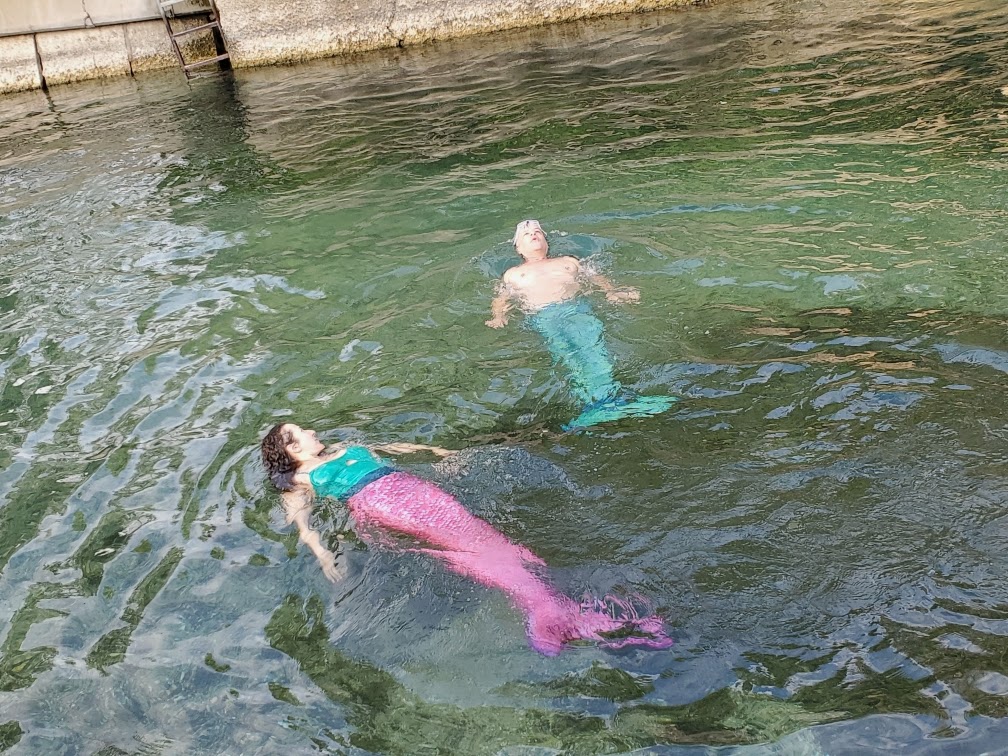
Addie Broyles and her husband Frank Curry practice their mermaid skills in the San Marcos River. Photo courtesy Addie Broyles
We hadn’t exactly “become” mermaids, but we had momentarily left behind the realities of an adulthood burdened with mind-numbing paperwork, anxiety-inducing schedules, and the heart-piercing grief of watching the news.
The discovery of this new experience was all either of us could think about. We could suspend our disbelief for as long as we could hold our breath.
The next day, we met Kraft at Sewell Park for the second day of our class. She brought the fins and fabric tails, and we had to demonstrate that we could get in and out of them in the clear, brisk and moving water of the San Marcos River. The magic and the silliness returned, and we were thrown back into this dream-like state of “mermaiding.”
Read more: Daytripping and Sipping in Shiner, Texas
Within an hour, we were exhausted. I can see why professional mermaids have to spend so much time building up their stamina. This was an entirely different challenge, and I can see why Kraft doesn’t teach the classes entirely in the river.
She walked along the sidewalk as Frank and I swam down the river and frolicked in the deepest part, swimming down to the sea grass. I pulled out a sandal from the bottom and felt like I’d truly joined the ranks of the San Marcos mermaid community, which exists not for the playfulness of mermaiding but to promote environmental stewardship.
More to do in San Marcos
We grabbed lunch at the nearby Three Six General butcher shop and then spent the day resting and then walking around downtown San Marcos.
Kraft keeps the mermaid classes to no more than eight people, and kids as young as 8 can participate. It costs $125 per session, and you have to call the shop to get on her schedule.
There are other classes where you can learn how to mermaid, including a franchise called Aquamermaid that requires you to have or rent your own pool, and Mermaid Dream School, which seems to focus on kids in Austin, Houston, Dallas, and Fort Worth.
I think we’ll still try to get to Weeki Wachee at some point, but even though the pigs and underwater mermaid theater are gone in San Marcos, I’m glad we got to experience mermaid culture there first.











